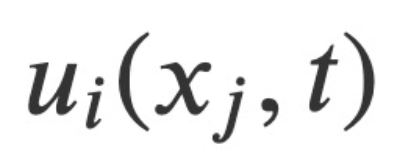Home >Technology peripherals >AI >Is the N-S equation problem solved? Juxtaposed with the Riemann Hypothesis, the Millennium Mathematical Puzzle is in sight for victory
Is the N-S equation problem solved? Juxtaposed with the Riemann Hypothesis, the Millennium Mathematical Puzzle is in sight for victory
- WBOYWBOYWBOYWBOYWBOYWBOYWBOYWBOYWBOYWBOYWBOYWBOYWBforward
- 2024-04-08 18:34:26804browse
This is one of the most famous unsolved problems in mathematics. The new work has been peer-reviewed and the full text is available.




This is critical for many engineering problems.
If there is a global solution to the Navier-Stokes problem, there will be breakthroughs in many technologies related to fluid mechanics, including but not limited to aerospace, rocket engines, Weather forecasting, pipeline transportation, medical blood flow modeling, and more.
The difficult problem involved with this set of equations is how to explain it using mathematical theory. Even the mathematical theory that explains Einstein's field equations describing exotic black holes is simpler than formulating the Navier-Stokes equations.

 and pressure
and pressure as variable field quantities, as well as the canonical conjugate momentum derived from analysis. Based on this, this study constructs a conserved Hamiltonian function H* that satisfies the Hamiltonian canonical equation, and formulates the related Hamiltonian-Jacobian equations for compressible and incompressible flows. This Hamiltonian-Jacobian equation reduces the problem of finding four independent field quantities to finding a single scalar functional among these fields - Hamilton's main functional. Furthermore, Hamilton and Jacobi's transformation theory provides a prescribed method for solving the Navier-Stokes problem: find S*.
as variable field quantities, as well as the canonical conjugate momentum derived from analysis. Based on this, this study constructs a conserved Hamiltonian function H* that satisfies the Hamiltonian canonical equation, and formulates the related Hamiltonian-Jacobian equations for compressible and incompressible flows. This Hamiltonian-Jacobian equation reduces the problem of finding four independent field quantities to finding a single scalar functional among these fields - Hamilton's main functional. Furthermore, Hamilton and Jacobi's transformation theory provides a prescribed method for solving the Navier-Stokes problem: find S*. 

If the analytical expression of S * can be obtained, then it will obtain a set of new fields through regular transformation, giving the analytical expressions of the original velocity and pressure fields, These fields will simply be equivalent to their initial values. Failing that, one can only prove that a complete solution to the Hamilton-Jacobian equation exists or does not exist, which would also solve the problem of the existence of the solution.
Could this new research lead to a million-dollar prize? To win, researchers must show that there are solutions to the three-dimensional incompressible Navier-Stokes equations and that, if there are solutions, those solutions are smooth.
Mathematician Terence Tao once thought that this was difficult.
 Judging from the current progress, new research has made it easier to solve open problems, and we have taken a big step forward - Navier-Stor The canonical Hamiltonian formulation of the Kers equation may mean that we can bypass the limitations of the standard Lagrangian and reduce the problem to finding a single scalar function.
Judging from the current progress, new research has made it easier to solve open problems, and we have taken a big step forward - Navier-Stor The canonical Hamiltonian formulation of the Kers equation may mean that we can bypass the limitations of the standard Lagrangian and reduce the problem to finding a single scalar function. Perhaps we are not far away from solving the second question of the Millennium Puzzle.
The above is the detailed content of Is the N-S equation problem solved? Juxtaposed with the Riemann Hypothesis, the Millennium Mathematical Puzzle is in sight for victory. For more information, please follow other related articles on the PHP Chinese website!
Statement:
This article is reproduced at:jiqizhixin.com. If there is any infringement, please contact admin@php.cn delete
Previous article:Just released! An open source model for generating anime-style images with one clickNext article:Just released! An open source model for generating anime-style images with one click
Related articles
See more- If you are a front-end engineer, what operating system should you choose?
- As an excellent PHP engineer, have you mastered all these Linux commands?
- Eight classic PHP senior engineering interview questions (with answers)
- What is the difference between computer software major and software engineering?
- What skills do algorithm engineers need to master?

